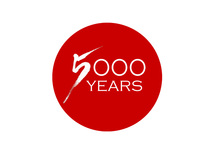Astronomy
Astronomy in China has a very long history, with historians indicating that Chinese were the most persistent and accurate observers of celestial phenomena anywhere in the world before the Arabs.
Star names later categorized in the twenty-eight mansions have been found on oracle bones unearthed at Anyang, dating back to the middle Shang Dynasty (Chinese Bronze Age), and the mansion system's nucleus seems to have taken shape by the time of the ruler Wu Ding (1339-1281 BC).
Detailed records of astronomical observations began during the Warring States period (fourth century BC) and flourished from the Han period onward. Chinese astronomy was equatorial, centered as it was on close observation of circumpolar stars, and was based on different principles from those prevailing in traditional Western astronomy, where heliacal risings and settings of zodiac constellations formed the basic ecliptic framework.
Star names later categorized in the twenty-eight mansions have been found on oracle bones unearthed at Anyang, dating back to the middle Shang Dynasty (Chinese Bronze Age), and the mansion system's nucleus seems to have taken shape by the time of the ruler Wu Ding (1339-1281 BC).
Detailed records of astronomical observations began during the Warring States period (fourth century BC) and flourished from the Han period onward. Chinese astronomy was equatorial, centered as it was on close observation of circumpolar stars, and was based on different principles from those prevailing in traditional Western astronomy, where heliacal risings and settings of zodiac constellations formed the basic ecliptic framework.

